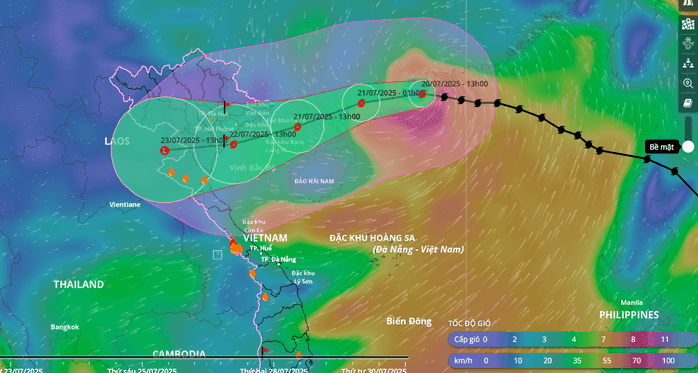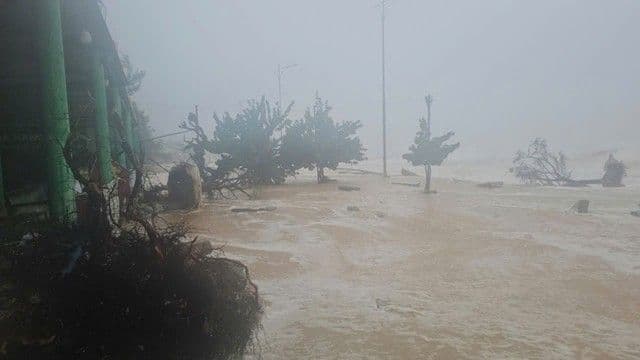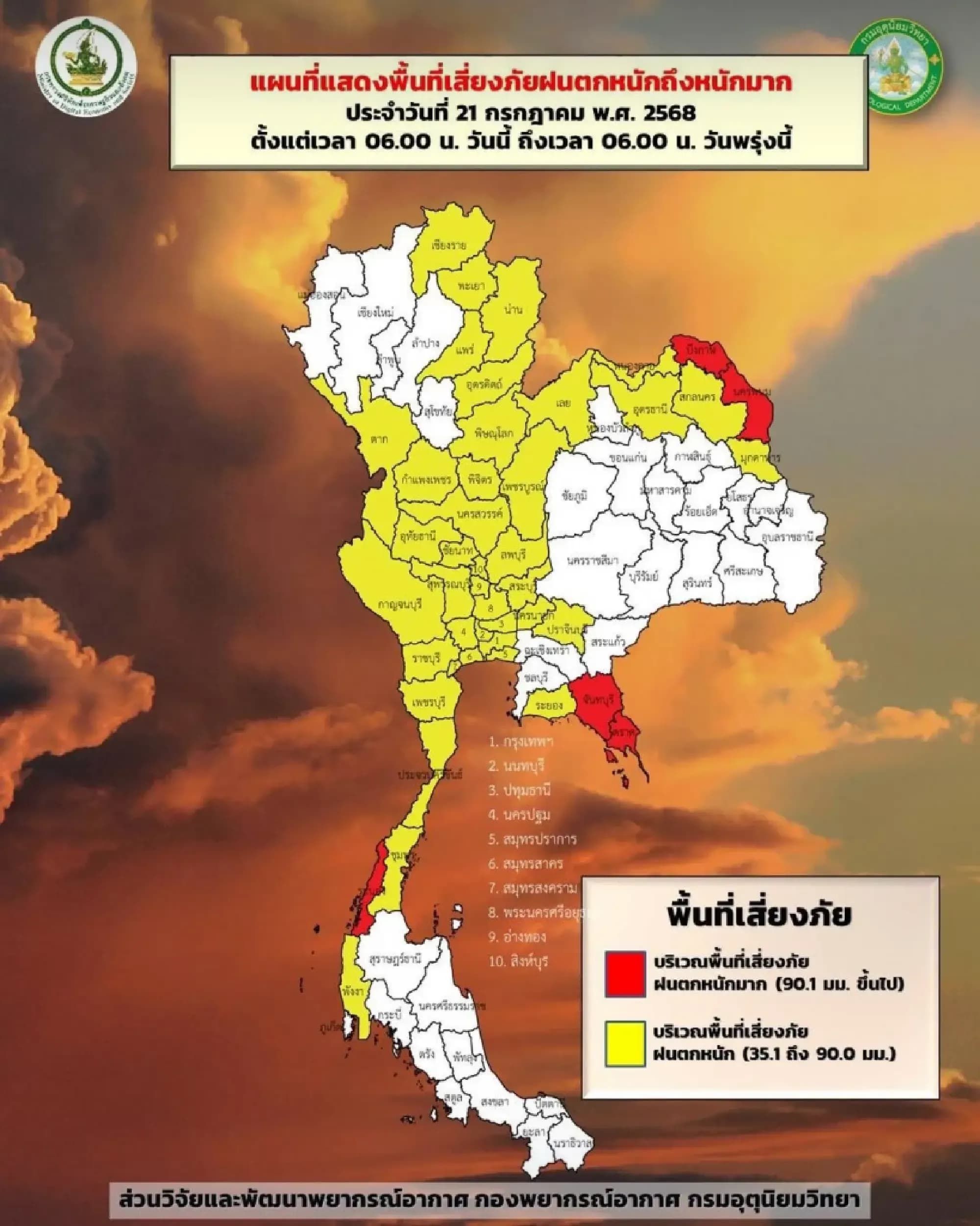Wipha's Whirling Warning: How Vietnam Faced an Unpredictable Force
Explore Typhoon Wipha's unexpected surge & Vietnam's swift, coordinated response. Unpack lessons learned in disaster preparedness against nature's unpredictable fury.
An Unpredictable Ascent: Wipha's Rapid Intensification
In the annals of Vietnam's recurring battle with tropical cyclones, Typhoon , designated as Storm No. 3, carved out a unique and particularly challenging narrative. Its trajectory across the (South China Sea) in July became a stark reminder of nature's inherent unpredictability. Entering the East Sea in the early hours of July 19, Wipha quickly escalated, confounding initial forecasts. What began as a formidable storm with sustained winds at level nine and gusts reaching a menacing level twelve, rapidly intensified, demonstrating an unexpectedly swift ascent in strength. This sudden surge posed an immediate and critical threat, far exceeding typical projections. The swiftly updated its warnings, highlighting the storm's potential to unleash heavy rains, widespread flooding, flash floods, and perilous landslides across Vietnam's northern and north-central regions in the ensuing days. Wipha's accelerated development underscored the evolving complexities of weather patterns and the paramount need for agile, responsive disaster preparedness mechanisms in a region increasingly susceptible to such unforeseen climatic shifts.
A Nation Mobilized: Urgent Actions and Coordinated Response
The alarming speed of Wipha's intensification triggered an immediate and robust mobilization across , showcasing the nation's well-honed, albeit constantly adapting, disaster response framework. Recognizing the gravity of the situation, the wasted no time, issuing an urgent telegram at noon on July 19. This directive cascaded down to ministries, agencies, and people’s committees in northern provinces and coastal areas stretching from to , demanding immediate and comprehensive preparatory measures. Deputy Minister personally rallied officials, underscoring the urgency to brace for torrential rains, especially in the northwestern region where the threat of widespread flooding loomed large. Concurrently, public awareness became a cornerstone of the response. Hiep specifically instructed state media outlets – including the , , and – to broadcast continuous storm updates and warnings. On the same pivotal day, the issued its own urgent dispatch, signaling a nationwide military readiness for rapid deployment and response. This synchronized activation of governmental, media, and military arms exemplified Vietnam's integrated approach to confronting an escalating natural threat.
Beyond the Winds: Wipha's Ripple Across Communities
While the immediate focus was on Wipha's intensifying winds, the storm's broader implications for communities quickly became apparent, extending far beyond the direct path of its core. The forecasted torrential downpours, high waves, and powerful gusts from July 20-23 meant a multi-faceted threat of flooding, flash floods, and landslides, particularly for vulnerable coastal and mountainous areas from to . Authorities urged vigilance, but the storm's ripple effect was already being felt even before its full impact. Transportation networks, vital for both commerce and potential evacuations, were among the first to be disrupted. , for instance, had to adjust flight schedules to and from on July 20, rerouting or delaying services to ensure passenger and crew safety. This seemingly distant impact near Hong Kong highlighted the interconnectedness of regional weather systems and the far-reaching consequences of a significant typhoon. The coordination of early warnings and public broadcasts aimed to mitigate these widespread disruptions, allowing communities to take proactive safety measures, secure property, and prepare for the inevitable aftermath of Wipha's passage.
Echoes of the Storm: Reimagining Resilience for Tomorrow
Typhoon , with its unexpectedly swift and intense strengthening, serves as a powerful case study in ongoing journey toward climate resilience. The storm's unpredictable ascent underscored a critical lesson: traditional forecasting models, while robust, must be complemented by agile response mechanisms capable of adapting to rapid changes. Vietnam's immediate, multi-sector mobilization – from urgent ministerial directives to military readiness and widespread public awareness campaigns – proved instrumental in mitigating potential devastation. Yet, the experience also prompts a deeper reflection on future preparedness. How can early warning systems become even more precise, anticipating not just a storm's path but also its propensity for rapid intensification? What infrastructure enhancements are needed to withstand not just strong winds, but the cascading impacts of unprecedented rainfall, flooding, and landslides? Wipha's echoes resonate as a call to continually reimagine and reinforce resilience strategies. It reinforces the imperative for continuous investment in climate-adaptive infrastructure, advanced meteorological capabilities, and community-level education, ensuring Vietnam remains ever-vigilant and prepared for an increasingly unpredictable future shaped by a changing climate.
Related Articles

Wipha's Ascent: Navigating the Multi-Faceted Peril Facing Northern Vietnam

Wipha's Ascent: Navigating the Multi-Faceted Peril Facing Northern Vietnam

Wipha's Deceptive Dance: Unpacking the Enigma of Typhoon No. 3

Wipha's Deceptive Dance: Unpacking the Enigma of Typhoon No. 3

Wipha's Unseen Architect: Decoding the Unusual Forces Behind Vietnam's Looming Deluge

Wipha's Unseen Architect: Decoding the Unusual Forces Behind Vietnam's Looming Deluge

Wipha's Wake: Inside Thailand's Coordinated Climate Defense
